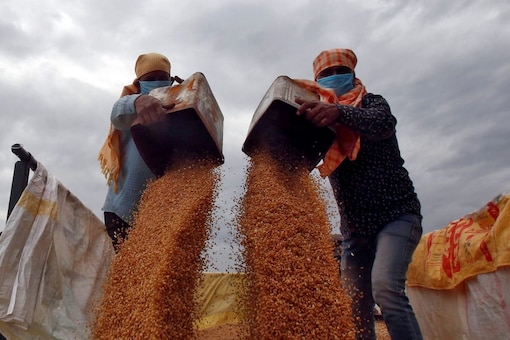NEW DELHI: There’s a big debate in the cor- ridors of power in the national capital and it revolves around one simple issue: Should India save wheat, or continue the exports?
The government needs to take a call, it is the biggest conundrum facing the BJP-led NDA alliance.
In 2020, New Delhi ex- ported 7 million tonnes, and the food department has kept the target for 2021 at 11 mil- lion tonnes. And then there are other issues. The state- owned Food Corporation of India (FCI) is sitting on 23 million tonnes of wheat stocks and there are chances that this year’s procurement may cross 17 million tonnes in 2022-23. But this would be down from the 23 million tonnes figure in 2021-22.
In addition, purchases by private traders have been very high, especially in states like Madhya Pradesh. Why? Madhya Pradesh’s exports are the highest because of the state’s proximity to Kandla and Mumbai ports. On the flip side, there has been a decline, as per government, of wheat production by 6% because of early heat.
So the total export realization as per the government estimates—would hover around $5 billion, says a top source in the food department. Now consider this one. In- dia, all along, has been a ma- jor exporter of rice and picked up a whopping $10 billion in 2021-22; the nation has never been a major player in export of wheat.
But now, there is a huge shortage of wheat beacause of Ukraine-Russia war and prices have skyrocketed to $340-$400 per tonne. So, expectedly, there is a huge clamour by countries facing shortages that India must increase its export to meet the shortfall.
“The value of exports of wheat is not very high but In- dia can muscle into the mar- kets dominated by Ukraine, Australia and Russia,” says a source.
But there is a catch—read, the conundrum. What happens if the Ukraine-Russia conflict extends and India has a poor monsoon and, worse, rice production and procurement fall?
And then, there is the China angle.
Reuters said in a report that China’s wheat production could be the worst in history. The agency quoted the Chinese agriculture minister admitting concerns about grain supplies in the world’s biggest wheat consumer.
Reuters further said Chinese Minister of Agriculture and Rural Affairs, Tang Renjian told reporters on the sidelines of the country’s annual parliament meeting that heavy rainfall last year—a rare occurrence—delayed the planting of about one-third of the normal wheat acreage. And then, a survey of the winter wheat crop taken before the start of winter found that the amount of first- and second-grade crop was down by more than 20%age points, Tang was quoted by the news agency.
Now if China enters the market to purchase wheat, the already tight supplies will cause prices to rocket.
The source further said there is some bad news coming from the United States, where production in the wheat bowl is falling hugely.
A report from the US says wheat in Kansas is just getting ready to break dormancy. Additionally, drier weather is forecast into spring. As of February 27, the Kansas wheat crop was rated 38% poor to very poor condition, 37% fair, and only 25% good to excellent by USDA’s National Agricultural Statistics Service.
And then, there was a downgrade in crop conditions across the US due to drought conditions. As of March 1, the entire state
US farmers are expected to reduce spring wheat planted acreage in the upcoming season, mainly due to high fertilizer prices. And then, dry conditions in the main spring wheat growing states of the northern plains could depress yields.
Experts say last year, drought in the US had pushed production of the main variety, hard red spring wheat, down 44% year over year to its lowest level in more than 30 years. Hence, concerns about US spring wheat come on top of poor prospects for the winter wheat crop, which has just emerged from dormancy amid drought conditions in the southern plains. And then, good-to-excellent crop conditions for US winter wheat, at 30%, is the lowest start to the spring season in more than two decades, the report added.
Wheat Yield Forecast Model of GRO-Intelligence, a leading wheat forecaster, is currently pointing to a double-digit-percentage drop in production from last year. Some 40% of US wheat production comes from hard red winter wheat, and about one-third is from spring wheat. So there is a serious crisis on hands. Mounting troubles for the US winter wheat and spring wheat crops were undercutting hopes that Washington would be able to significantly ease tightness in global wheat supplies due to the Russia-Ukraine war.
In the middle is India.
Now, the Indian policymakers need to take a call, and have to appraise the balance in Indian demand and the clamour for increased exports from the global markets.
And politically, it puts India into a very dominant position internationally. Now New Delhi needs to balance the two. All eyes on the PMO where bureaucrats are already discussing the issue and will recommend it to Prime Minister Narendra Modi, who will then make the decision.

